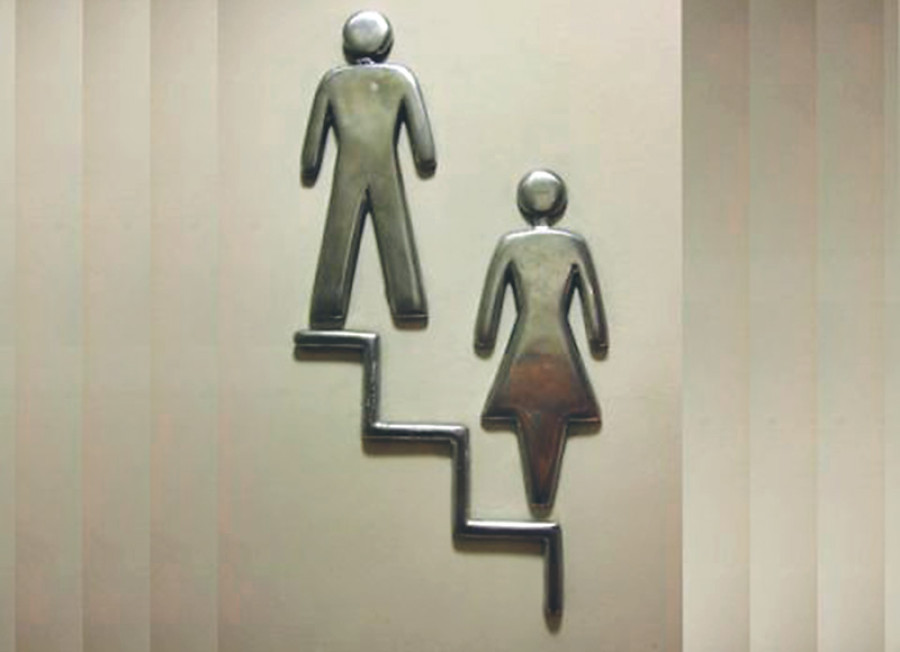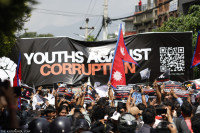Opinion
The purse strings
Ram Kumari of Samshergunj, Banke has lately been engaged in seasonal vegetable farming.
Ashika Sharma
Ram Kumari of Samshergunj, Banke has lately been engaged in seasonal vegetable farming. The 38-year-old mother of three is a member of two cooperatives, and has to deposit a fixed sum of money with them each month. She doesn’t make enough from her vegetable farming to pay the monthly dues, and has to ask her husband to cover the deficit. But he is not supportive, and they sometimes have heated arguments when her husband tells her to leave the cooperatives. This is a familiar story across rural Nepal. Women have no control over household finances despite being an earner. This is an area which has not been adequately addressed in poverty alleviation programmes and surveys.
Inaccurate picture of poverty
Poverty measurements are focused exclusively on the household and not within the household where women are worse off than their male counterparts. This results in an inaccurate picture of poverty. Surveys mostly deal with the income and expenditure of respondents. In most quantitative studies, each person in a given household is classified as poor or non-poor depending on the deprivations his or her household experiences. Doing so ignores the fact that women within a household are more vulnerable to deprivation than men. Very often we see that women have fewer to no resources. They are usually trapped in time-consuming, unpaid domestic work that limits their options to work outside. Their voices are rarely heard, for example, in decisions on managing the economy, or sharing benefits and costs.
The experience of poverty could vary between individuals of the same household. Thus, the traditional approaches to poverty measurement fall short of explaining these differences in the experience of poverty along various demographic axes within a household. The existing literature illustrates that women are more vulnerable to experiencing poverty than men because of various constrictions. Economic opportunities defined by access to economic resources, credit, land ownership and inheritance, education and public services make women more vulnerable to experiencing poverty. All this can be categorised as a restriction on participating in the family’s socio-economic decision making. They might have been provided opportunities to participate in income-generating activities, but they are largely denied any say in decisions on money matters.
Gendered dimension of poverty
Women’s lack of control over the income they contribute to the family kitty is a problem warranting immediate attention in the fight against poverty. This is not a problem in Nepal alone. Many developing countries face this kind of situation. According to a 2015 United Nations report, about one in three married women from developing regions have no control over household spending on major purchases, and about one in 10 married women is not consulted on how their own cash earnings are spent.
According to a paper on multidimensional poverty analysis, the Human Development Index (HDI) was one of the initial efforts of the United Nations Development Programme (UNDP) to measure development based on per capita income, life expectancy and educational attainment to gauge the standard of living. However, it did not capture the gendered dimension of poverty. The Gender Development Index (GDI) and the Gender Empowerment Measure (GEM) were designed to move the issue along the gender line, but many gendered dimensions of poverty such as time-use and unpaid work have not been taken into account.
The Multidimensional Poverty Index (MPI) evaluates poverty based on a household’s deprivation and uses different dimensions to determine poverty beyond the mainstream income-based lists. Although the multidimensional measure helps to mirror the range of deprivations faced by a household and uses the household as a unit of analysis, it also falls short of highlighting the intra-household experiences of poverty deprivation and overlooks the gender aspect. Development professionals say there are still no methodologies, data or resources to collect adequate statistics on this matter.
Feminisation of poverty has been a concern in the development sector and in poverty alleviation programmes over the last few decades. As prominent feminist scholars Meena Acharya and Lynn Bennett explained, feminisation of poverty may not be visible in terms of income but rather in terms of impact on women’s access to food, education and health facilities and their long working hours. Until a research method is developed that takes into account the denial of the right to economic decision making of women like Ram Kumari while acknowledging their contribution to the household’s income, women will continue to reel under poverty even as their family members witness improvements in the living standard.
Sharma is a researcher at Interdisciplinary Analysts, a research/consulting firm in Kathmandu




 13.12°C Kathmandu
13.12°C Kathmandu










